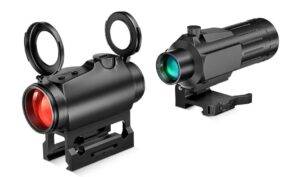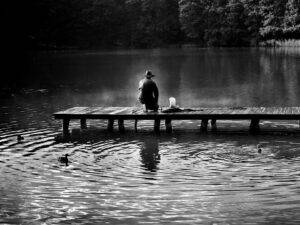
An extensive hunting trip requires that you prepare for extreme weather conditions that you might encounter. It might be scorching sunshine in the afternoon, rainfall, snowfall or other extreme conditions. A simple emergency shelter is a basic requirement for all hunters. You don’t need expensive materials to set up a shelter that can protect you from the elements. Here are some shelter ideas that you can consider when hunting.

Quinzhee
A quinzhee can protect you from snowfall, sleet, rainfall, winds, and other elements. This shelter is dome-shaped just like an igloo. You can build it in a few steps using simple materials. What you need is about 3 or 4 dozen 12-inch guide sticks, snow, a tarp, and your gear. Pile your gear under the waterproof material then pack the snow until it is about 2 feet thick. Insert the sticks around the shelter, then create a small opening and retrieve the gear and tarp. Excavate snow from the shelter until you reach the base of each stick. Finally, create a fist-sized ventilation opening on top of the quinzhee to get fresh air.
Wedge tarp
A wedge tarp can protect you against rainfall and strong winds. Building this shelter is advantageous since it also allows you to harvest water. To set up this shelter, tie down two corners into the prevailing winds then tie up the center of the opposite side. Tie the last two corners on the ground, but make sure that it has a less steep angle to increase openings for ventilation. Place logs/rocks under the tarp to create basins for water harvesting.
Ramada
If you want to go hunting in a hot desert or an area with less vegetation, you need to know how to set up a Ramada. This shelter can protect you from dehydration by blocking the scorching sun during hot afternoons. It can also have removable walls to protect you from strong winds. To build this shelter, you need beams, four posts, and roofing material. You need to carry most of the building materials since you might not find vegetation or poles in a hot desert. Just like prefabricated homes made by Modular homes Queensland, your shelter will be transported and assembled on site. The roofing material can be a mat, a tarp or brush while the poles/beams can be lightweight beams.

Learn-To
This primitive shelter is easy to set up provided the building materials are readily available. The perfect location to set this shelter is where there are two trees close to each other. Start building the shelter by tying a long pole between the trees. Cover one side of the shelter with brush, poles, and branches. Finally, cut palm fronds, grasses and leaves, then heap them on top of the shelter to stop the elements. This natural shelter is difficult to see, therefore, you might consider hanging a bright cloth or flag on top of the shelter so that someone can see it from a distance. This shelter doesn’t hold heat and it is advisable to light a fire to keep you warm.
Bough bed
If you are in the wilderness, then the temperatures drop quickly, don’t wait for hypothermia to kick in. Get some grass, leaves, evergreen boughs and other plants that can make a bough bed. The bed frame can be two pieces of log about 3 feet apart. Fill the space between the logs with boughs and other materials. You can add dry leaves which can keep body heat. Fig boughs can be added to make your bed soft.
Extreme heat, low temperatures, and other severe weather conditions can kill in minutes. There are various techniques and materials you can use to set up an emergency shelter when hunting. The most common shelter ideas include building a Quinzhee, Bough bed, Wedge tarp, Learn-To, and a Ramada.







